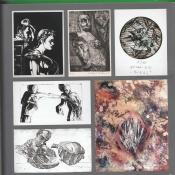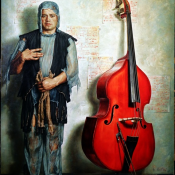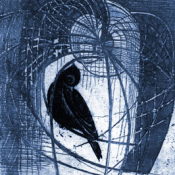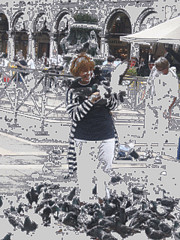Creation Category:
Dacia Revival is a foundation which proposes to demonstrate that “We, The Dacians have not perished.”
The various opinions, concepts, unscientific interpretations presented in a false manner trying to attribute to our nation a recent origin, are inaccurate.
When Alexander von Humboldt said that: “the ability to understand one’s history, constitutes, for every nation the “the test stone” of its maturity,” I believe that he was including us, those living for millennia in the Carpatho-Pontico-Danubian space, whatever you want to call: Romanians , Vlahos-Vlahs-Vlaci, or Geto-Dacians.
These wrong interpretations, attributing to us a “Roman” origin, ignoring the fact that the Carpatho-Pontic-Danubian region represents the cradle for the people of Europe, is what determined me to create: the “Dacia Revival”, “Dacia Magazine”, “Dacia T.V.” in New York and to organize the Dacology Congresses: Sarmisegetuza 2000, Burebista 2001, N. Densusianu 2002 ,Tartaria 2003, Danubian Civilization Roots 2004, Kogaion 2005 and Decebal 2006.
The truth not only has to be spoken, but it has to be proven as well.
The creation of a false history about our people, during the last 200 years, based on ignorance, on an unreasonable preoccupation to prove that Romanians are a nation of a recent interbreeding between some Roman soldiers and local Dacian women, is an ignominy. The morbid logic, which governs those kinds of “historical” concepts about the formation of Romanian people, is immoral.
Let’s turn the pages of some of “Romanian” history books and see how the Romanian people were created.
Florin Constantinescu, in “A Sincere History of the Romanian People,” published by “Universal Encyclopedic” Bucharest 1998, on page 36 teaches us that: “An important factor in the process of Romanization were the human contacts and, most important were the marriages. Dacia dried out of men… it cannot be denied that the wars have caused big losses in the male population in the Dacian Realm. The colonists have filled these gaps and as the natives interbred (the author forgets to mention whether he is talking about men or women) with the new comers, the mixed marriages became more frequent.”
The same “historian” lets us know that, the “categorical” superiority of the Roman Civilization as compared to the Geto- Dacians imposed itself in the Carpatho-Danubian space, romanized the natives, and first made Romans out of Geto Dacians, who finally became Romanians!
These “historical pearls” are found in abundance not only in this “sincere history” of the Romanian people, but even in the ones opposed to it.
The truth is that Dacia was the last country conquered by the Romans in Europe and the first one to withdraw from the Roman Empire .
The Maltese were occupied by them for 1,088 years (from 218 BC to 870 AD) and they don’t speak Latin today.
The Greeks were under Roman occupation for 641 years (from 146 BC to 395 AD), the Egyptians for 425 years (from 30 BC to 395 AD), the Hebrews for 325 years (from 70 BC to 395 AD) and the Britons for 450 years.
I do not remember anybody saying that Latin is spoken today in any of these countries.
André Maurois, in the “History of England” asks himself: “where are all those Romanized Celts and Britons after 450 years of Roman occupation?” None of these peoples occupied for hundreds and thousands of years by the Romans, have forgotten their language, only, the Dacians, did! And this is after less then 165 years of Roman occupation of only 14% of the Dacian territory.
I believe there should be a limit to our credibility in accepting the dogma (believe and don’t ask!) of our history.
The Carpatho- Danubian region holds the oldest vestiges of the existence of human activities in Europe, indicating the affiliation to the large area of the anthropogenesis. In Valcea district, at Bugiulesti, a large amount of animal bones brings us face to face with the Villafranciane period. The human ostheological remains, from the Ohaba-Ponor cave (two hand phalanxes and one from the foot) belonging to the Homo Sapiens Neanderthalensis, take us into another historical period. The settlement of “Pestera Cioarei” (The Crow’s Cave) from Borosteni, in the Gorj district, which was carbon 14 dated, shows us that it was habituated 47,550 years ago.
There is not much we can tell about these far off ancestors. One of the most depressing aspect of our history starts when politics try to manipulate our past. One finds himself helpless face to face with these scientists, who got to some illogical conclusions about the historical past of our people and one asks himself, whether it isn’t be better not to get involved in their “affairs”. To exist, the truth needs two things: someone to speak it out and someone to hear it.
I’ll take the first step and talk to you about our true ancestors, Geto- Dacians.
We cannot walk through life blind folded and with the ears covered to an evident truth.
We cannot refuse to listen to the comments of the ones who are rejecting the dogma- believe and don’t ask. I am the teacher; you have to listen to me!
We can’t accept the fact that, till the year 106 AD, Daco-Romanian didn’t exist only because that is what we are thought in the Romanian schools and universities. We cannot accept the fact that the Roman legions penetrated Dacia, conquered 14% of its territory for a negligible historical period of time, 165 years and, over night, its entire population, occupied or not, started speaking a different language, the Roman one (without 86% of Dacia’s territory ever being stepped on by the Roman soldiers’ foot).
We cannot accept that some Roman Empire’s mercenaries arrived from all over the corners of the ancient world; Africa, Palestine, speaking their home language, which, by far wasn’t Latin, rushed battling into Dacia, to interbreed.
Ironically, accordantly to some Romanian historians, they managed to do that not only in the 14% of the occupied territory, but even on the rest of the 86% never seen by them.
Today, the official Romanian historians try to convince us that the Roman soldiers, were not only very virile (after a military service of 25-30 years), but also very cultured, succeeding to teach the Latin not only to the Dacian women, their spouses and parents, but even to the new born ones… Big patience and culture had these Roman mercenaries, and all that in a period of one hundred years!
Gentlemen, such dumb founded “history” we do not have to accept, without objection. Isn’t it more logical, somehow, what the greatest Romanian historian Nicolae Densusianu proves: the Dacians spoke the Latin language, before the Romans to exist (see www.dacia.org).
The fact that we are not Rome ’s descendants, rather than the Romans are our later grandsons (see Augustin Deac”The History of the Historical Truth” 2002), is proved and waits to be discovered by some of the Romanian historians.
Carolus Lundius, the President of the Swedish Academic of Science, who in the year 1687, published “Zamolxis the First Legislator of the Gets” in which he affirms that the first written laws in the human history were Zamolxis laws, was proud to consider his people related to Geto Dacian one .
Observe the first written message in the history of humanity was found in , Tartaria where little clay tablets were discovered bearing a pre-Sumerian writing.
Even the puzzle Dacians versus Gets was solved almost 2000 years ago by Dio Casius in Epitome of Book LXVII: “I call the people Dacians, the names used by the natives themselves as well as by the Romans, though I am not ignorant that some Greek writers refer to them as Getae“
When will our history start not with a meager and insignificant defeat, but with the Geto- Dacian kings and their grate victories?
Let tray to see how these history could look like….
“At the time when Rome was a clutter of a few little neglected and dusty villages, the Geto-Dacians were battling the great Empires of the world, and winning.
Herodotus and Iordanes tell us about the arrival on our territory in the year 529 BC of Cyrus, Persian king, the ruler of a vast Empire, stretching from the Mediterranean Sea to the Hindus.
His military force, a true war machine, created to crash any resistance attempt, gives up in front of the Carpatho-Danubian people and Cyrus the Great dies in a battle with the Messgets. Queen Tomiris, the victorious winner of the battle, will build at Euxine a fortresses today known under name of Consatanta; the name of queen Tomiris is never mentioned in the Romanian history books.
Fifteen years later, in 514 BC, wanting to wipe off the shame suffered by his predecessor, leading 700,000 soldiers and building a bridge made of warships from Chalcedony to Bezants, arrives the Great Persian king, Darius, the son of Histaspe.
He wanted to take a closer look at these Gets “who believe themselves immortals”, and he was given the occasion.
In the beginning, Darius proposed marriage to Antirus’s daughter, the Getic king. Despising the king, the Gets refused him. Furious, Darius builds another bridge, this time over Danube , penetrating on our territory, but the luck doesn’t smile to him. He was defeated at Tape and leaves in hurry, without stopping at Moesia . His great dream was shattered by the Daco-Getic king Antirus (see: Iordanes Foundation, “Gandirea” Bucharest 2001 page 24).
After his death, his son, Xerxes, wanting to revenge his father’s insult (tells us the same Iordanes on page 25), starts a campaign against Geto Dacians with an army of one million of which 700,000 soldiers, 300,000 auxiliaries, as well as 1200 war ships and 3000 transport ships”.
What do you think, gentlemen, about the effort to rise such an armed force against an insignificant people, without culture, who had to wait another 650 years for the Romans to conquer and “interbreed” with them?! Doesn’t it seem to you that someone is playing a”strange joke” with this history?
Not long ago, only a few months after the 3rd International Congress of Dacology, dedicated to N. Densusianu , the “Vestala” publishing company published posthumously the scientific work of N. Densusianu “The Military History of the Romanian People”. This is a distinguished literary work, which together with “Glorious Princes and Famous Captains of the Romanian Principates”(I. Oprisan) make substantially relative the denigrating opinions emitted in regard to N. Densusianu literary work, and requires a reevaluation, without prejudices of his contribution to the historiography and Romanian culture (I. Oprisan).
Today, the history of the Carpatho-Pontico-Danubian region is rediscovered by some foreigners such as: William Ryan and Walter Pitman (Senior Scientists at Columbia University N.Y.) or Maria Gimbutas (professor of linguistic archeology at the University of California L.A.). Just as N. Densusianu, they are not afraid to declare that the cradle of the old Europe is this place where, today’s Romanians, are found.
In fact, reading their conclusions, we return to him, to N. Densusianu, the one who in 1913, through his posthumous literary work “Prehistoric Dacia”, was introducing us, the Daco-Romanians, as one of the first people of Europe and as the ones who shaped Europe. Unfortunately, his work was published in a period when the Latinism and the politico- religious idea of the Catholic type was flourishing, period which will put us back in time, by a few hundred years.
The uselessness of the idea that the Romanian people emerged after the year 106 AD as a young people in Europe and its emptiness, shocks N. Desusianu, but not his contemporaries, and why not admit, ours, as well. This idea continues today, being perpetuated by the same elected persons who are supposed to defend the dignity and destiny of our people.
Nicolae Densusianu has the courage to confront them all and to prove a different origin of our nation, the one, which, instead of starting with the year 106 AD, stretched over thousands and thousands of years, where our ancestors were heroes, persons deserving respect.
He, N. Densusianu, has dedicated his entire working strength and breath to the nation he belonged to and of which he was proud. He belonged to the people who passionately loved the entire land occupied by Romanians, where the borders were set by the spoken language, Dacia. The proto-Latin Dacia, the Pelagsic Dacia was his beloved homeland and for whose rise he worked and sacrificed himself.
At the beginning of twenty century Nicolae Iorga Argiropolus, put again in circulation the unfortunate idea of the so called “Romanizing” of the Dacian people. This halted the Dacian research for some hundred years. In a moment of lucidity and inspiration, he contested everything he had sustained his entire life, by affirming that” we are not a nation of bastards”.
It is “impossible to believe that the Romanian people was born from the withered potency of some Roman veterans drained of vigor after a military service of 20-30 years”, tells us Cornel Barsan in the “Dacia’s revenge” Publishing Objective, Craiova, page 90.
Even so, the monsters’ gallery incited on our nation would not be complete, says the same C. Barsan, if there would be no mention of the Romanian authors, who, in a solidarity spirit with the above, don’t refrain from insulting the nation’s spirit by labeling the Dacians as drunks, Decebal as invader, Vlad Tepes/ The Impeller, as a famous criminal of Stalin and Hitler’s type, Mihai Viteazul-paranoic colonialist, the genius of the Romanian poetry, Mihail Eminescu- fascist, Octavian Goga-knave, and Mihail Sadoveanu and George Calinescu-communists.
Turning over the pages of the world’s publications, we find the American Sumerolog, John A. Halloran asking himself “How can it be explained the fact that inside a western Romanian region, surrounded by towns with Sumerian names: Urastie, Simeria, Kugir, there were found little tablets made from local clay with Sumerian pictograms on them, but older by 1000 then the ones from Mesopotamia.”
In the “Scientific American Journal” from 1968, the Tartaria tablets are presented as being similar to the ones from Mesopotamia, but earlier by 1000 years.
The Russian archeologist V.Titov estimates that the primitive writing has its origins in the Balkans of the IV- th millennium BC.
In 1973, the subject of Milton McChesney Winn’s Ph. D. thesis at the University of California L.A., was regarding the emergence of the writing within the Vincea culture, which considered the Tartaria- Romania writing as being the oldest in the world, at least up to the respective date (1973). Marja Gimbutas, professor of archeology at USLA, one of the promoters of this hypothesis, was a coordinator for this doctorate thesis (The living Goddesses – University of California Press, 1999 p.50-51), where the above researcher lets us know the fact that Tartaria writing preceded the Sumerian one by a few thousand years.
The researcher Haral Harmann “Research Centre of Multilingualism” of Brussels, on the 28th of October 2000, at a Conference taking place in Milan, talked about the beginning of writing in the Balkans at 5.500 BC, not forgetting to mention the fact that, till not long ago it was considered that the writing was invented in Sumer, in the year 3.300 BC.
The Romanian archeologists were more cautious, considering, in the beginning, the little tablets of Tartaria as fake. Later on, they considered the signs on them as primitive ones, then sacred signs, maybe a sacred writing, maybe a beginning of writing? Or some Sumerian merchants passed by us and lost them (and all this with more then 1000 years before ’s existence!). How could they, the pre-Dacians, write before anyone else? How were they to write, if they couldn’t read?
After 42 years from their discovery by the Romanian archeologist N. Vlassa, their existence begins to be accepted. But the Romanian archeologists are disagreeing with the dating, arguing that it would be an historic inaccuracy to consider these tablets as old as the rest of the world does.
In 2004, Marco Merlini from, took samples of the bones, found at the same archeological site where the Tartaria tablets were found, to Rome to be Carbon tested for age. The results were a surprise for the Romanian archeologist only, but not for the members of the Dacia Revival International Society. The tests showed that the bones were 7,540 years old, 2,000 years earlier, before started its existence. Therefore, the writing on the Tartaria tablets was at least that old. There were additional surprises. The bones belonged to a woman, in her early fifties with an anatomical defect of the left leg, not to a man, as earlier believed by the Romanian scientists. Some of the previous Congresses of Dacology tried to answer some of these questions:
- Did it exist in Europe a writing, 2000 years older than the Sumerian and Egyptian writing?
- Where in Europe did it emerge? In the Carpatho-Danubian space?
- Did this writing of the proto-Europeans disappear or did it continue until today?
- Is it possible that a short period of 165 years occupation of only 14% of the Dacian territory by Roman mercenaries caused the complete disappearance of the Dacian language, and replacing it by Latin? Doesn’t it make more sense that the Indo-European language which emerged from the Carpatho-Danubian space, gave birth not only to the Sanskrit language, but also the “Romance” languages such as Latin? T
he most serious theories of Indo-European Origins propose that the homeland of the speakers of the Proto-Indo-European language is to be found in the Southeast Europe. This theory was most comprehensively proposed by the eminent Russian linguist and historian Igor M. Diakonov in his seminal paper [(1985). “On the Original Home of the Speakers of Indo-European.” Journal of Indo-European Studies. Volume 13, p. 92]
One of the most respected archaeologists of our time, Colin Renfrew thinks that Proto-Indo-European unity is to be found in the Balkans, in agreement with the opinion of Diakonov. Proto-Indo-European was however an offshoot of Pre-Proto-Indo-European which was the language of the early farmers who crossed the q1Aegean from Anatolia to settle in Thessaly. There, and in their subsequent northern expansion was formed the Proto-Indo-European community which subsequently gave birth to all the historical Indo-European languages “The Tarim Basin, Tocharian, and Indo-European origins: a view from the west,” in V.Mair (ed.), The Bronze Age & Early Iron Age Peoples of Eastern Central Asia (Journal of Indo-European Studies Monograph #26, vol.1)
From Carpatho-Danubian-Balkans center, as Diakonoff realized, (around 5000 BC), a division with the bulk of the early Proto-Indo-European languages of central and Western Europe (the languages of “Old Europe” in some terminologies) appears and on the one hand, and those of the steppe lands to the north of the Black Sea on the other (4th millennium BCE).
More recently, Finnish scholar Kalevi Wiik has also proposed Indo-European origins in Southeast Europe. He has expounded his theory on the origins of European peoples in several journal articles and, more recently in his book “Eurooppalaisten juuret” There is also an article written by him on the Web.Europe's Oldest Language
The theory of Indo-European origins in Southeast Europe has received additional confirmation recently from Gray and Atkinson. They were using a methodology similar to that used in evolutionary biology,
“Language-tree divergence times support the Anatolian theory of Indo-European origin,” Nature 426, 435-439]. The results of all analyses, irrespective of the initial assumptions were very robust and accurate.
They were also in agreement with an other independent linguistic analysis of Indo-European languages [Rexova, K., Frynta, D. & Zrzavy, J. “Cladistic analysis of languages: Indo-European classification based on lexicostatistical data. ” Cladistics 19, 120–127 (2003)].
For thousands of years, the legend of great flood has endured in the biblical story of Noah and such Middle Eastern myths as the epic of Gilgamesh. Few scientists believed that such a catastrophic deluge had actually occurred. But these Bible “stories” for some scientific people appeared to have a real sense.
William. Ryan and Walter Pittman in their scientific research regarding Noah’s Flood, “The new scientific discoveries about the event that changed history” have discovered an event that changed history; a sensational flood 8,600 years ago in what is today the Black Sea .
Archeologists searched the length and breath of the Tigris and Euphrates rivers in Mesopotamia for evidence of such a flood, to no avail. The end of the Cold War enabled Ryan and Pitman to team up with oceanographers from others countries, to explore the Black Sea . Using sound waves and coring devices to probe the sea floor, they discover clear evidence that this inland body of water had once been a vast freshwater lake lying hundreds of feet below the level of the world’s rising oceans.
12,500 B.C., earth temperature increased, and the Eurasian ice sheet started to melt. The level of sea and oceans increased with 150 meters. peninsula becomes an island.
The Atlantic Ocean water burst through the Strait of Gibraltar and refilled the Mediterranean basin. Increased Mediterranean Sea level of 150 m. had a disastrous consequence, huge pieces of land being flooded, sank. One example being the piece of land that was linking Balkan peninsula with Anatolia (Turkey today) which disappeared giving birth to a new sea, Thracian Sea, later known as Aegean sea and a lot of new islands. Strange cultures, very advanced civilizations were left in these islands, long time ago tip of mountains, proving that this piece of land was an important corridor of civilization who was linking Europe and Asia . Suddenly the legend of lost Atlantics started being more realistic.
Sophisticated dating technique, sometime using both the carbon 14 and a new method of Thermal Ionization Mass Spectrometry (TIMS) confirmed that 8,600 years ago the mounting seas had burst through the narrow Bosporus valley, and the salt water of Mediterranean had poured into the lake with unimaginable force, racing over beaches and up rivers, destroying or chasing all life before it. The margins of the lake, which has been a unique oasis, a Garden of Eden for an advanced culture in a vast region of semi-desert, became a sea of death. The people fled, never to return. Today scientific people explore the exiting archeological, genetic, and linguistic evidence suggesting that the flood rapidly created a human Diaspora that spread as far as Western Europe, Center Asia, and the Persian Gulf . They suggested that the Black Sea People could well have been the mysterious proto-Sumerians who developed the first great civilization in Mesopotamia , the Pre-dynastic pharaohs, the Semitic people.
Understanding these testimonies presupposes a little reflection when we are speaking about old Romanian or better saying Dacian history.
sursa: www.dacia.org










